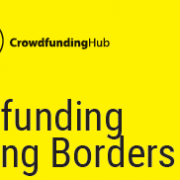Current State of Crowdfunding in France 2016
An overview
 Inhabitants: 67,2 million (2016)
Inhabitants: 67,2 million (2016)
GDP (ppp) per capita: $40.375 (2014)
(Source: Wikipedia; Image Credit: NuclearVacuum)
France is amoung the first countries to embrace crowdfunding, with the first platforms (reward based and lending without interest) launched in 2007 /2008. Today, France counts about 140 platforms. Since 2013 volumes in crowdfunding have been doubling. Despite witnessing a slow down, donation and reward based are still the most popular forms of crowdfunding, gathering around 80% of the financers. The lending platforms are growing rapidly due to the new regulation that enables an individual to lend with interest to an enterprise.
*Please note that shortly after the first publication of this report, the French Minister of Economy announced changes in the French regulation of Crowdfunding.
Volumes
Amount raised in 2015 is nearly €300 million, broken down into:
- Donation based crowdfunding: € 8,3 million
- Reward based crowdfunding: € 41,9 million
- P2P consumer lending: € 137,5 million
- P2P business lending: € 31,6 million (credit) & €24,1 million (bonds)
- Equity based crowdfunding: € 50,1 million
(Source: Financement Participatif France, Baromètre du Crowdfunding 2015 by CompinnoV)
Local platforms
Compared to other countries there are many local platforms in France, the largest and most well known are:
KissKissBankBank & Ulule (reward based).
Lendix, Unilend, Lendopolis and Lendosphere (P2P business lending).
Anaxago and Wiseed (equity based platforms).
Prêt d’Union (P2P consumer lending)
Foreign Platforms
There are no exact data available but LendingClub is probably one of the largest international platforms active in France, next to Indiegogo and Kickstarter.
Regulations*
France was the leader to implement a specific crowdfunding regulation. Since the 1st October 2014 two statuses were set up: IFP (Intermédiaire en Financement Participatif) for the crowdlending, and CIP (Conseiller en Investissement Participatif) for crowdinvesting (equity and bonds).
Since then more than 60 platforms where registered as IFP and created much growth in the P2P lending industry.
A private lender can now provide up to €1000 for a loan with interest or €4000* for a loan without interest. Enterprises are not allowed to lend to other enterprises on crowdfunding platforms. The borrower can get a loan for the maximum amount of €1 million, for a maximum maturity of 7 years.
Since December 2015, a government amendment gives the possibility for lenders to deduce the potential loss from the no-reimbursement of a crowdfunding loan, to the interests received from other loans in the calculation of their income taxation.
Since the new regulation of October 2014 32 equity based platforms were registered as CIP. A CIP can deal with common shares or fixed-rate debt instruments. The maximum amount that can be raised is €1 million*. The CIP is not allowed to communicate on its project (just institutional communication is allowed).
The other option for equity platforms is to register as PSI (Prestataire de Service d’Investissement), which is a European status. It needs a minimum capital of €50.000 if funds are not received from the public, €125.000 if funds are received from the public.
Regarding the possibility for enterprise to lend to other enterprises: the government choose the cash voucher as an instrument to enable this (in order to preserve the bank monopoly). At the moment the government is also preparing this instrument to apply for CIP’s.
There is no specific regulation for donation based or reward based crowdfunding.
Since December 2015, the local authorities can use crowdfunding to finance projects. Before, it was complicated, as they were not allowed to entrust the administration of their funds to a private structure.
However, the rules to call for public generosity have to be clarified. A threshold has to be fixed by decree. For now, it is not clear if initiatives have to do a declaration to the (local) government before can launch a call for public generosity on a platform.
* Please note that shortly after the first publication of this report, the French Minister of Economy announced changes in the French regulation of Crowdfunding. The current limits for private lenders (€1,000 for interest-bearing loans and €4,000 for interest-free loan) will be raised to €2,000 and €5,000, respectively. The government will propose to raise the ceiling of equity crowdfunding from currently €1 million to € 2.5 million and 50% of the issuer’s value. (8 april 2016
Banks & Investors
After a time of wait and doubt, the banks are slowly looking at crowdfunding with interest and close partnerships. The types of partnerships can be very different:
– Banks are forwarding projects to platforms they can’t finance themselves in order to provide solutions for their clients’ needs (e.g. Crédit Coopératif with Wiseed),
Some banks are launching and investing in crowdfunding platforms (Crédit Mutuel Arkéa and Prêt d’union)
– Sometimes they are lending to small and medium enterprises on crowdlending platforms (Groupama Bank and Unilend) or financing projects selected from reward crowdfunding platforms.
– There are also examples of banks assessing the credit risks for financers (SPEAR and Société Générale)
Some are involved in the selection of the projects that can be financed on crowdfunding platforms (BNP Paribas and Wiseed)
Our expert

“We can talk of a real dynamic of the crowdfunding sector in France as it proofs the number of platforms created and the increase of the amount collected each year. But there are still some blockages for the development of the sector in France and on a European level, and the actors must work jointly to explain the potential of the crowdfunding and knock down the barriers.”
The Current State of Crowdfunding in France is made possible by the contribution of Florence de Maupeou
What is the potential of crowdfunding in your country?
The crowdfunding regulation that was implemented in October 2014 caused a real dynamic in the crowdfunding sector because:
– It proofed the willingness of the government to develop the sector and they gave it more visibility.
– It gave an appropriate status for the crowdequity platforms whereas before the platforms had to take inappropriate status to their activity.
– It was a breach in the French bank monopoly as before the new regulation, the individuals were not able to lend with interest.
However, there are still some constraints for the development of the sector that we hope will resolved. In September 2015, 15 propositions for the development of the sector were proposed: http://financeparticipative.org/les-15-propositions-de-fpf-pour-le-developpement-du-crowdfunding/
What is the biggest challenge?
The lack of European harmonization: Each time a platform wants to operate in a foreign country, it has to adapt the local regulation and its process.
What is the future holding for France?
Crowdfunding is more and more structured and the banks are looking at it with more interest, doing some various kind of partnerships: acquisition of an interest in a platform, orientation of projects they can’t finance towards platforms, credit risk insurance, lending to enterprises through the platform…
However, to enable the sector to fulfil its potential, we still have some barrier to remove as enabling the enterprise to lend to other enterprises through crowdfunding platforms, increase the threshold of 1000€ per project for a lender, facilitate the communication on projects for the crowdequity, promote a better taxation of the financers considering the risk taken by them, etc.









